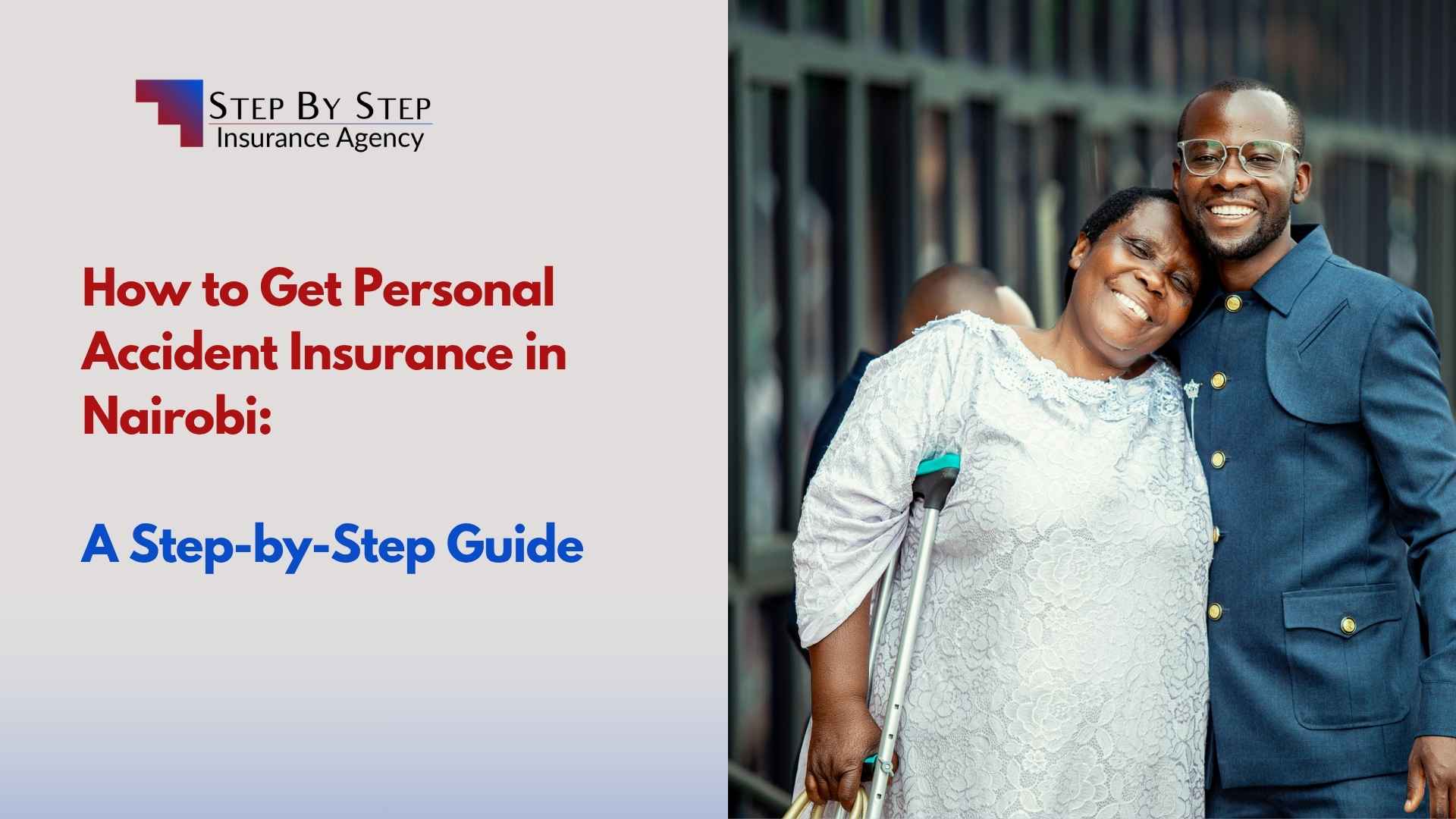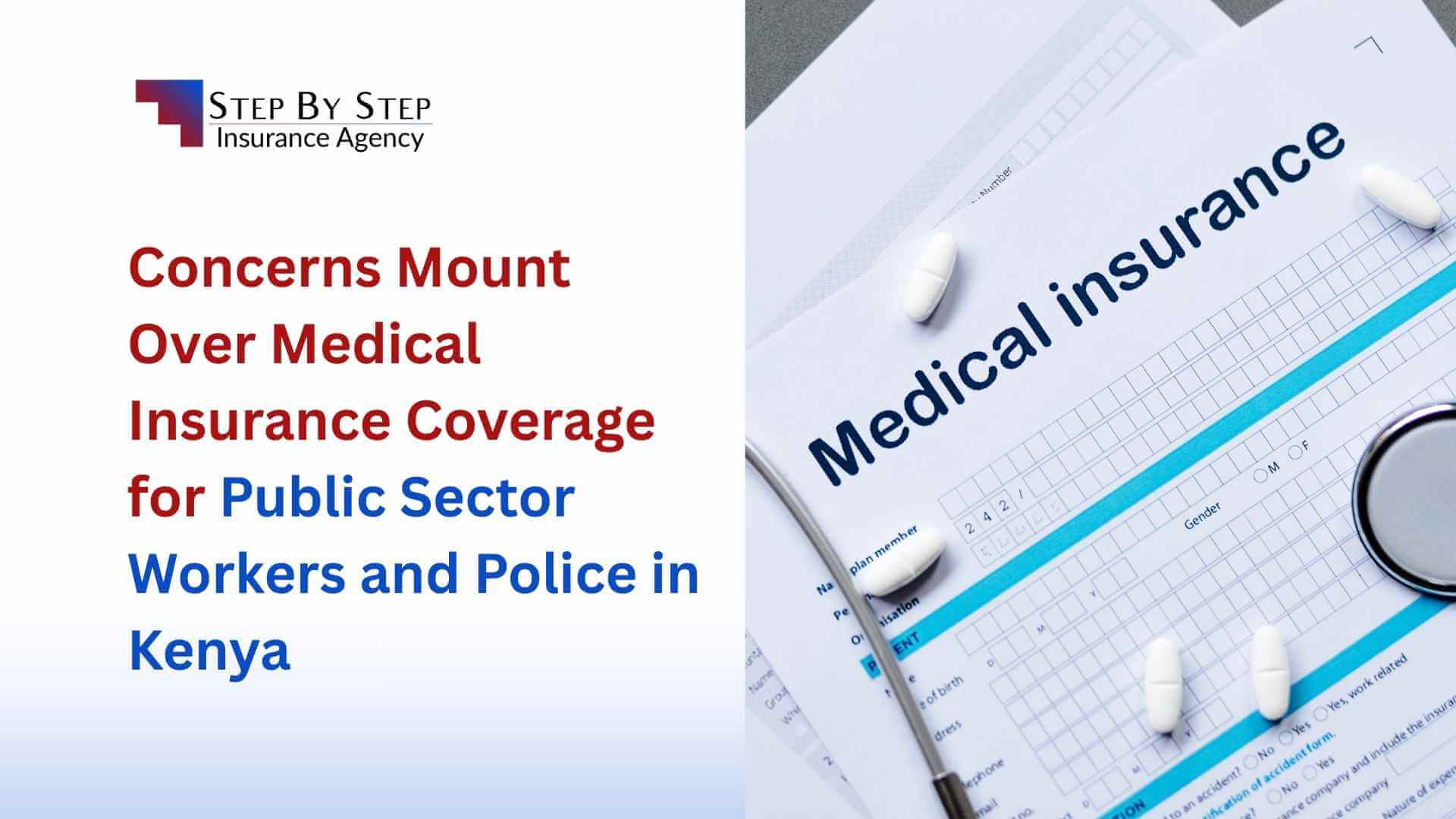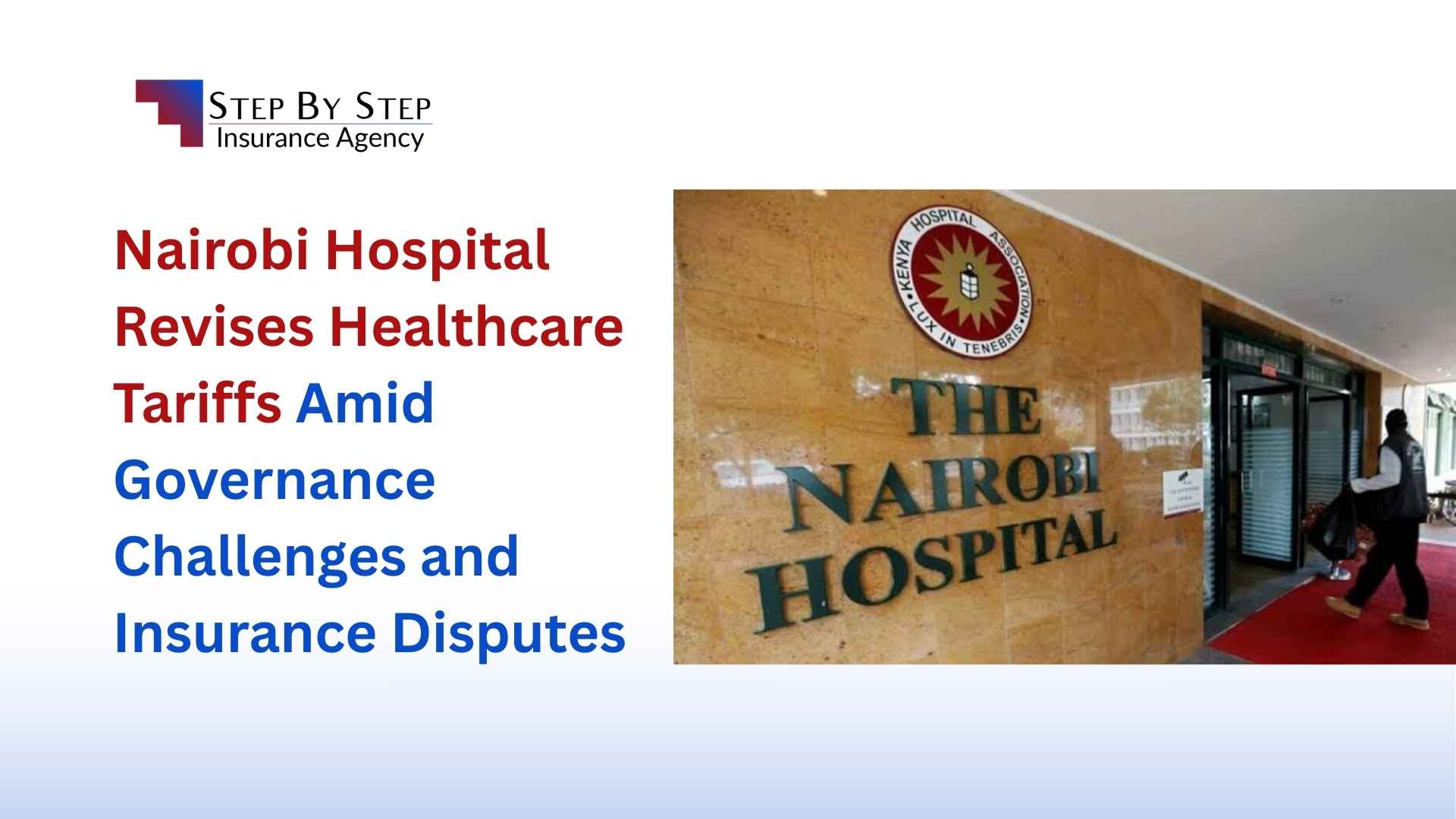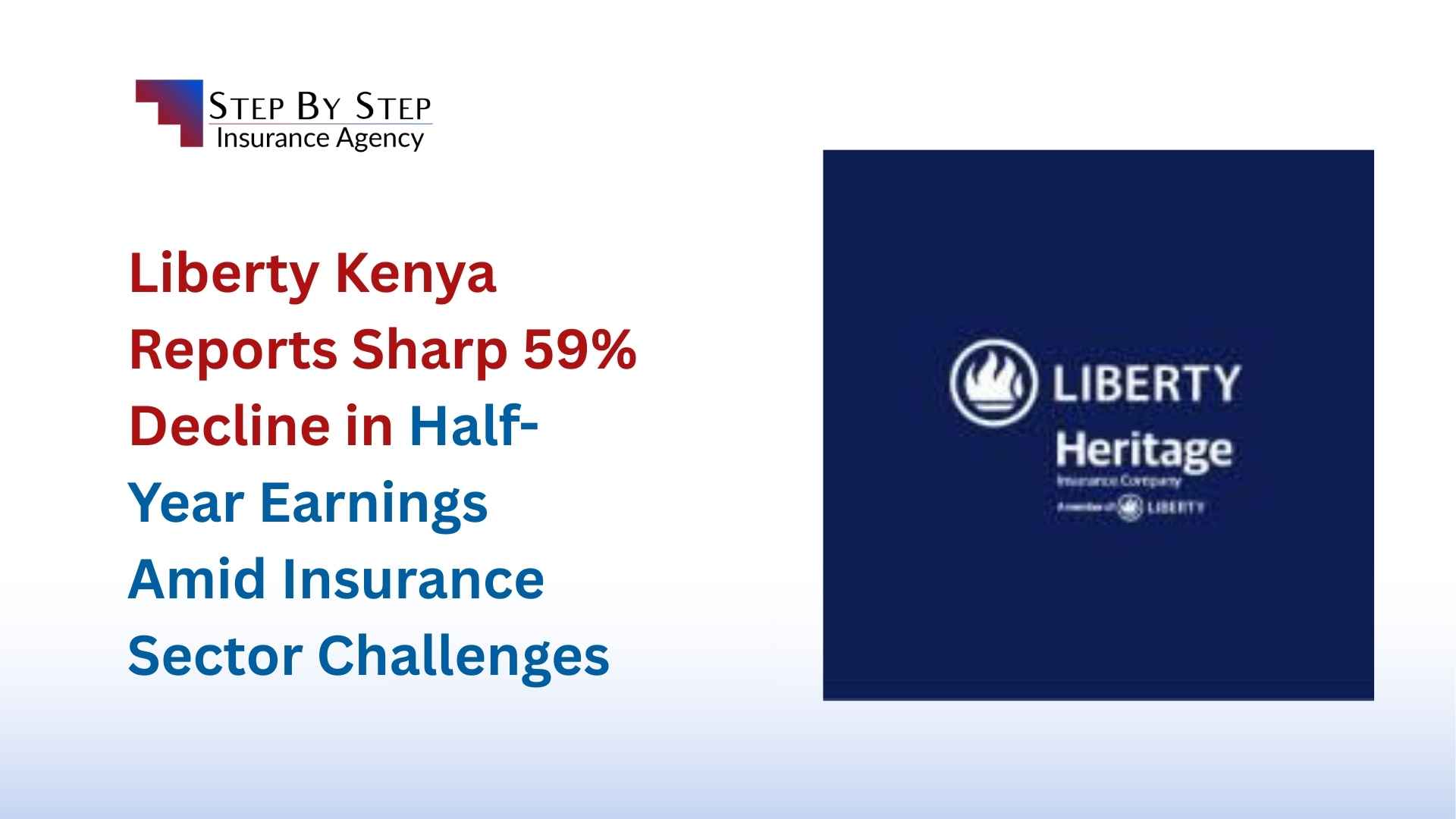Contractor Liability Insurance in Kenya: Complete Guide 2025 | Step by Step Insurance
In Kenya’s rapidly expanding construction sector, risk is part of everyday operations. Whether it’s property damage, site accidents, or unexpected losses, a single incident can lead to massive financial setbacks. That’s why Contractor Liability Insurance—also known as Commercial General Liability (CGL) Insurance—is crucial for safeguarding your business.
At Step by Step Insurance Agency, we partner with Kenya’s leading insurance companies to offer comprehensive, affordable, and dependable contractor insurance solutions that protect you at every stage of your project.
💡 Key Takeaways
Contractor Liability Insurance protects against third-party claims for property damage or bodily injury, while Contractors All Risks (CAR) Insurance provides broader coverage including damage to works, materials, and equipment. Both are essential for construction businesses in Kenya to manage risks, comply with contractual requirements, and maintain financial stability.
📑 Table of Contents
- What Is Contractor Liability Insurance?
- Why It’s Essential for Contractors in Kenya
- What Contractor Liability Insurance Covers
- What Is Contractors All Risks Insurance (CAR)?
- What Is Covered Under Contractors All Risks Insurance
- Additional Insurance Options for Contractors
- Who Needs Contractor Liability or CAR Insurance?
- Cost of Contractor Liability and CAR Insurance
- Common Exclusions to Note
- Legal Requirements in Kenya
- Why Choose Step by Step Insurance
- Benefits of Working With Us
- Quick Comparison: Liability vs CAR Insurance
- How to Get Covered
💬 Join Our Construction Insurance Community
Connect with other contractors, get expert advice, and stay updated on the latest insurance trends and news in Kenya’s construction industry.
Join Our WhatsApp GroupWhat Is Contractor Liability Insurance?
Contractor Liability Insurance protects contractors, builders, and construction firms against third-party claims related to property damage, bodily injury, or other losses arising from business operations.
It provides coverage for legal fees, settlements, and compensation costs, ensuring your business stays financially secure—even when faced with lawsuits or on-site accidents.
“In Kenya’s construction industry, contractor liability insurance is no longer optional — it’s a business necessity for safety, trust, and compliance.” – Step by Step Insurance Experts
Why It’s Essential for Contractors in Kenya
Kenya’s construction industry contributes over 7% to the national GDP, employing hundreds of thousands of skilled and unskilled workers. However, the risks on construction sites—injuries, equipment damage, and legal claims—are constant.
Key benefits of contractor liability insurance include:
- Protection from third-party claims (property or bodily injury)
- Financial security against unforeseen incidents
- Credibility boost when bidding for projects or tenders
- Compliance with contractual requirements
- Coverage for legal costs and settlements
What Contractor Liability Insurance Covers
| Coverage Type | Description | Example Scenario |
|---|---|---|
| Bodily Injury | Covers medical costs for third parties injured on-site. | A visitor slips and breaks a leg at your construction site. |
| Property Damage | Covers accidental damage to another person’s property. | A subcontractor damages a client’s boundary wall. |
| Products & Completed Operations | Covers damage caused by completed or installed work. | A roof installed by your team collapses weeks after completion. |
| Legal Costs | Covers attorney fees, court expenses, and settlements. | You are sued by a client after a structural failure. |
What Is Contractors All Risks Insurance (CAR)?
Contractors All Risks Insurance (CAR) is an “all risks” cover that provides broader protection than standard liability insurance. It shields contractors from physical loss or damage that may occur during the construction of buildings or infrastructure projects such as:
- Residential apartments and office buildings
- Industrial facilities and factories
- Power plants and dams
- Roads, bridges, and other civil works
This policy covers damage to works, materials, equipment, and third-party liabilities, ensuring comprehensive security throughout the construction period.
For more detailed information about CAR insurance, read our guide on Contractors All Risk Insurance benefits for Kenyan contractors.
What Is Covered Under Contractors All Risks Insurance
| Coverage Category | Description |
|---|---|
| Costs of All Materials and Works | Covers all temporary and permanent works used in the construction process. |
| Principal’s Existing Property | Protects parts of the property or structures already in place before construction began. |
| Contractors’ Plant, Equipment, and Machinery | Covers physical loss or damage to tools, cranes, mixers, and other machinery at the project site. |
| Debris Removal Costs | Covers reasonable expenses incurred for removing debris after an accident. |
| Third-Party Liability | Covers loss or damage to third-party property or injuries arising from project execution. |
💡 Fact: Contractors All Risks Insurance is often mandatory for major construction contracts in Kenya, especially in government or donor-funded projects.
Claims Documentation Required
To process a claim under your Contractors All Risks or Contractor Liability policy, you’ll need the following:
- A duly completed claim form
- A police abstract (if applicable)
- Purchase receipts or invoices for affected materials or equipment
- A detailed statement of the incident
- Any other supporting documentation requested by the insurer
“We are here to give you all the support you need — from documentation to settlement — every step of the way.” – Step by Step Insurance Team
Additional Insurance Options for Contractors
For full protection, Step by Step Insurance recommends combining your liability policy with other specialized covers:
| Insurance Type | Purpose | Ideal For |
|---|---|---|
| Professional Liability (E&O) | Covers errors, negligence, or omissions in design or consultancy. | Architects, engineers, and project consultants. |
| Commercial Auto Insurance | Covers vehicles used for construction purposes. | Contractors using pickups, trucks, or vans. |
| Workers’ Compensation | Covers medical costs and lost wages for injured employees. | Companies employing laborers or site staff. |
| Builder’s Risk (Contract Works) | Protects construction materials and partially completed structures. | Ongoing building projects. |
| Commercial Umbrella Liability | Provides extra coverage limits beyond your existing policies. | Large contractors with multiple projects. |
Who Needs Contractor Liability or CAR Insurance in Kenya?
If you’re involved in construction or related trades, you need at least one of these policies. They’re ideal for:
- General contractors managing large-scale projects
- Subcontractors like plumbers, electricians, and welders
- Independent tradespeople such as painters and landscapers
- Construction project owners and developers
- Civil and structural engineers
Having valid insurance signals professionalism and compliance — helping you win more contracts and avoid project delays.
Cost of Contractor Liability and CAR Insurance in Kenya
Your insurance premium depends on several factors:
| Factor | Impact on Cost |
|---|---|
| Project Value | Higher-value projects increase your premium. |
| Type of Work | Riskier work (e.g., roofing) attracts higher rates. |
| Business Size | Larger firms with more projects pay higher premiums. |
| Location | Costs differ across counties (e.g., Nairobi vs. Kisumu). |
| Claims History | A clean record lowers premiums significantly. |
💡 Estimated Range:
Contractor Liability Insurance: From KSh 50,000 – 150,000/year
Contractors All Risks (CAR): From KSh 80,000 – 250,000/project, depending on project value and duration.
Common Exclusions to Note
| Not Covered | Alternative Cover |
|---|---|
| Damage to your own tools or property | Equipment insurance |
| Employee injuries | Workers’ compensation |
| Intentional damage or fraud | Not insurable |
| Pollution or environmental hazards | Environmental liability insurance |
| Professional errors or negligence | Professional liability insurance |
Is Contractor Liability Insurance Legally Required in Kenya?
While Contractor Liability Insurance is not a legal requirement, it’s often mandatory in contractual agreements—especially with government agencies, NGOs, and private developers.
Contractors All Risks Insurance, on the other hand, is often required before work begins on large infrastructure and civil engineering projects.
Failing to have either policy can lead to:
- Disqualification from tender bids
- Contract delays or cancellations
- Personal liability for damages
Learn more about the legal considerations for Contractors All Risks Insurance in Kenya.
Why Choose Step by Step Insurance Agency
At Step by Step Insurance, we partner with top-tier insurance companies in Kenya, including ICEA Lion, Britam, Jubilee, CIC, and GA Insurance, to deliver:
- ✅ Tailored coverage for contractors, engineers, and developers
- ✅ Competitive pricing with flexible payment terms
- ✅ Fast and transparent claim processing
- ✅ Expert advice from licensed insurance professionals
- ✅ Nationwide service coverage across all major Kenyan cities
“Step by Step Insurance partners with the best insurance companies in Kenya to give contractors peace of mind while they focus on building the nation.”
Benefits of Working with Step by Step Insurance
| Benefit | What You Get |
|---|---|
| Access to Top Insurers | Get quotes from Kenya’s most trusted providers. |
| Personalized Solutions | Tailored policies for your business type and budget. |
| Expert Guidance | Clear explanation of exclusions, limits, and claims. |
| Claim Assistance | Step-by-step help from filing to settlement. |
| Fast Processing | Quick issuance so you can focus on your projects. |
Quick Comparison: Contractor Liability vs. Contractors All Risks Insurance
| Feature | Contractor Liability Insurance | Contractors All Risks (CAR) |
|---|---|---|
| Covers Third Parties | ✅ Yes | ✅ Yes |
| Covers Property Damage | ✅ Yes (to others’ property) | ✅ Yes (including own works) |
| Covers Contractor’s Equipment | ❌ No | ✅ Yes |
| Covers Employees | ❌ No | ❌ No (requires workers’ comp) |
| Covers Material Damage | ❌ No | ✅ Yes |
| Covers Completed Work | ✅ Yes | ✅ Yes |
How to Get Covered
Getting insurance through Step by Step is simple:
- Request a Quote – Share project details and business size.
- Compare Policies – Get tailored options from top Kenyan insurers.
- Get Covered – Choose your plan and enjoy peace of mind.
Final Thoughts
In Kenya’s construction industry, risks are unavoidable—but losses don’t have to be. Whether it’s Contractor Liability Insurance or Contractors All Risks Insurance, these covers protect your business, projects, and reputation.
At Step by Step Insurance Agency, we make sure you’re protected every step of the way — from the ground up.
Secure your construction business today. Contact Step by Step Insurance for a free quote and discover why we’re Kenya’s trusted partner for contractor insurance solutions.
Ready to Protect Your Construction Business?
Contact us today for a free consultation and customized insurance solution.
Call us: +254 (0) 729 712 200 | +254 (0) 716 534 192












